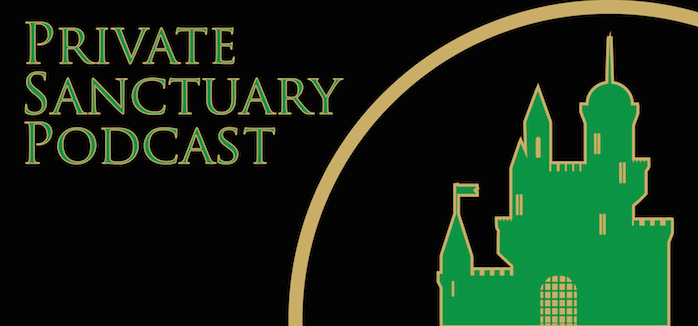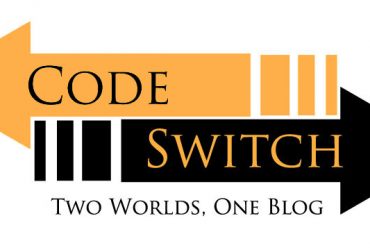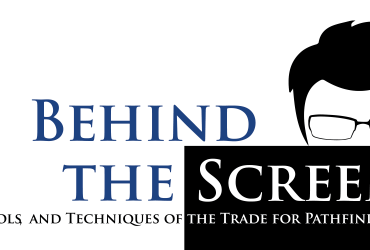Hey everyone,
There’s no podcast episode this week. Between my catching the sickness last week and Alex coming under a similar malady this week it just wasn’t in the cards for us. We normally try and have a couple of weeks worth of backlog to deal with unexpected things and emergencies. But we’re fresh out.
But we know y’all want something. So instead of that sweet sweet aural content, this week you get a Private Sanctuary Press article. And we’re continuing our exploration of our frozen Demiplane. When last I left off, I was setting out to establish a community that survived in the world without a dragon – and thus without easy access to life-sustaining warmth and magic. I’d like to continue that line of thought to fill in the details of another type of society that exists with our world without the need for a draconic presence. Unlike all of our previous articles though, rather than a specific geographical location, today’s subject will be a specific type of peoples living all across our Demiplane. As with much of my Demiplane creation, a lot of this article will be written in a stream-of-consciousness-like style and then edited into some sort of coherency. I find it helps me think and generate ideas. It’s probably a bit more conversational than Alex typically likes to handle things, but I hope you’ll stick along for the ride. Anyways, here goes.
As with any kind of believable world design, we start with some real world foundations. Broadly speaking, early societies after the advent of agriculture on real-world Earth can be divided into two groups: Farming and Herding. With little exception, farming communities maintained parcels of land in the same location year after year so that they could grow crops to feed themselves. The size of the community would depend on the success of the harvests and the largest communities grew up around areas of land that were particularly fertile. These communities were largely sedentary and it is the regular surplus generated by successful farming communities that eventually gave rise to the development of cities.
On the other hand, herding societies relied on the health and number of animals that were kept. And that meant finding sufficient feed and pasture to sustain those animals. Herding societies had an advantage over farming ones in that they could exist in areas where the land was not as arable or lush. However, the trade off was that a herding community would be required to live at least a semi-nomadic or fully nomadic lifestyle in the search for suitable areas to pasture their herds. Excess and surplus or goods or resources were not usually characteristics of nomadic societies because constant travel necessitated that these peoples keep and take with them only what was needful and nothing else.
So far, with Birrothgarde and Hearthcrown, we’ve detailed up a bit of the “farming” society side of the Demiplane. With or without the existence of dragons, these communities are tied to a specific area of land and the identities of both those societies and the peoples within them are intrinsically tied to those areas. So I thought I’d take a stab at developing a society with roots in a herding lifestyle.
When I trying to create a nomadic style of people the first real world analogue that popped into my head were the Mongols, tribespeople from central Asia who herded – amongst other things – horses, cattle, goats, and oxen. Under the leadership of Ghengis Khan and his descendants, the Mongols established the largest pre-Industrial Age empire in the world. But prior to their conquests the Mongols existed at the fringes of “civilized” societies, sustaining themselves through hunting, animal husbandry, and raiding. This latter activity was undertaken as much on one another as on neighboring farming communities with the primary purpose of acquiring manufactured goods, tools, and clothing. It is this type of society that I want to bring into our Demiplane. We have a number of plans for sedentary settlements that exist around dragons. But what of people who exist at the fringe of that world?
Because the existence of a herding society is so intrinsically tied to the animals they oversee, my second thought was the realization that we haven’t given much mention to fauna (or flora for that matter) on the Demiplane. We did to a whole episode on the woolly rhinoceraptor, but one animal does not a believable setting make. Although, it would be a shame not to touch upon that most lovely of creations again. And how cool would it be to have a group of people who rode into battle mounted upon those ferocious beasts? You don’t have to answer that. I know how cool it is…
But we’ve already established woolly rhinocerators as a carnivorous predatory species. And herding animals, by definition, are herbivorous prey. So while we can associate our collection of nomadic tribes with woolly rhinoceraptors – perhaps as mounts or camp guardians – we can’t have them be the only animals utilized by the nomads. The other issue with herding animals is that -as previously established – their existence is entirely dependent upon large areas of grazing land. Alex and I haven’t established much of a precedent as to what the ecology of this Demiplane actually is. But, for the sake of pushing onwards, let’s say that not 100% of everything all the time is covered in deep layers of snow. There vast prairies and plains of tough, hardy, scrub grass. Much of this flora might not be thriving, but its surviving. This allows us to insert a herding animal for our herding societies to, you know, herd… Fortunately, we’ve got a real-world ice age-ish herding animal that we can just shoehorn into our Demiplane. The auroch, the wild ox, the precursor to the bison/buffalo.
So now that we’ve got those details taken care of (or at least out of the way), we can move on to actually talking about this nomadic, herding, tribal society. I’ve been kicking around names in my head for this group of peoples and the one I keep coming back to is “Kuraltai”. In the real-world, Kuraltai is the transliteration of a Mongolian word whose root, “kural” that means, “gathering,” or, “assembly”. It strikes me as fitting as any nomadic society within our frigid Demiplane would have to exist as a tight-knit community in order to survive.
I’m envisioning the Kuraltai as a loose collection of tribes who rely on the herding aurochs to survive but also raise and train woolly rhinoceraptors for mounts and companions. Kuraltai tribes are made up of individual family clusters who live, herd, and travel with one another. Each tribe is ruled by a Khan elected from among and by the prominent adults from each family. The Kuraltai exist in the vast spaces between settlements on our Demiplane and act as anything from traders to raiders depending on region.
The exact structure of a tribe, their governance, religion, and relationships with various settlements are too much to get into here and subject for another article. But I think we’ve got a decent enough foundation from which to build. Let me know what you think so far and look out for more Private Sanctuary Press articles in the future!
-Anthony






